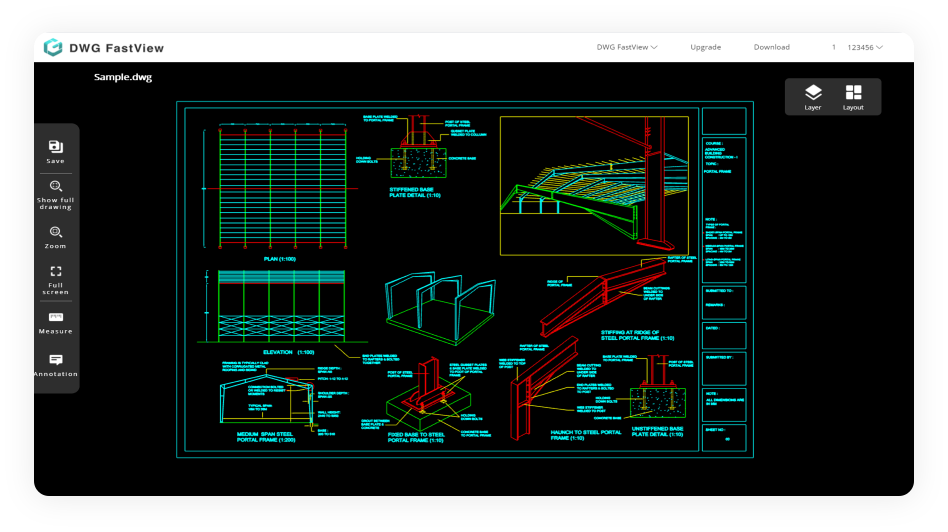




Subject:
Enhancing Design Precision and Productivity with CAD Software (May 6, 2024)
Prayer Request:
Enhancing Design Precision and Productivity with CAD SoftwareComputer-Aided Design (CAD) software has revolutionized the way we approach design and drafting in various industries. From architecture to engineering, CAD systems offer a suite of powerful features that enhance precision, productivity, and collaboration. This article delves into the key features of CAD software and how they contribute to the efficiency of the design process.To get more news about features of cad pdf, you can visit gstarcad.net official website.Intuitive User Interface and Customization Modern CAD software boasts an intuitive user interface that simplifies the design process. Users can customize toolbars and menus to suit their workflow, increasing efficiency and reducing the time spent searching for commands. The ability to tailor the software to individual needs is a significant advantage, allowing designers to focus on creativity rather than navigating complex menus.
 Advanced Drafting Tools CAD systems come equipped with advanced drafting tools that enable precise drawing and editing. These tools include snap-to-grid capabilities, which ensure accuracy in measurements and alignments. Designers can create detailed 2D sketches and 3D models with ease, thanks to the software’s robust geometry and precision tools.Layer Management Effective layer management is crucial in CAD design. It allows designers to organize various elements of a drawing into separate layers, making it easier to edit and view specific parts of the design. This feature is particularly useful when working on complex projects with multiple components.Powerful Rendering and Visualization CAD software provides powerful rendering capabilities, enabling designers to visualize their creations with realistic lighting and materials. This feature helps in presenting ideas more effectively and making informed decisions during the design process. The ability to create photorealistic images and animations is invaluable for client presentations and marketing purposes.Collaboration and Connectivity Collaboration is key in the design industry, and CAD software facilitates this through enhanced connectivity features. Designers can share files and work collaboratively with team members, regardless of their location. Cloud-based solutions and compatibility with various file formats make it easier to integrate CAD into a collaborative workflow.Parametric Modeling Parametric modeling is a standout feature of CAD software, allowing designers to define the relationships between different elements of a design. This means that changes made to one part of the model automatically update related components, saving time and reducing the potential for errors.Extensive Libraries and Blocks CAD software often includes extensive libraries of predefined blocks and components, which can be easily inserted into designs. This not only speeds up the design process but also ensures consistency across different projects.Compatibility and Integration The compatibility of CAD software with other tools and systems is essential for a seamless design process. Many CAD programs offer integration with other software, such as Building Information Modeling (BIM) systems, which further streamlines the workflow and enhances project management.Conclusion The features of CAD software are designed to optimize the design process, making it more efficient, accurate, and collaborative. As technology continues to advance, we can expect CAD systems to evolve with new features that further enhance the capabilities of designers across various industries.
Advanced Drafting Tools CAD systems come equipped with advanced drafting tools that enable precise drawing and editing. These tools include snap-to-grid capabilities, which ensure accuracy in measurements and alignments. Designers can create detailed 2D sketches and 3D models with ease, thanks to the software’s robust geometry and precision tools.Layer Management Effective layer management is crucial in CAD design. It allows designers to organize various elements of a drawing into separate layers, making it easier to edit and view specific parts of the design. This feature is particularly useful when working on complex projects with multiple components.Powerful Rendering and Visualization CAD software provides powerful rendering capabilities, enabling designers to visualize their creations with realistic lighting and materials. This feature helps in presenting ideas more effectively and making informed decisions during the design process. The ability to create photorealistic images and animations is invaluable for client presentations and marketing purposes.Collaboration and Connectivity Collaboration is key in the design industry, and CAD software facilitates this through enhanced connectivity features. Designers can share files and work collaboratively with team members, regardless of their location. Cloud-based solutions and compatibility with various file formats make it easier to integrate CAD into a collaborative workflow.Parametric Modeling Parametric modeling is a standout feature of CAD software, allowing designers to define the relationships between different elements of a design. This means that changes made to one part of the model automatically update related components, saving time and reducing the potential for errors.Extensive Libraries and Blocks CAD software often includes extensive libraries of predefined blocks and components, which can be easily inserted into designs. This not only speeds up the design process but also ensures consistency across different projects.Compatibility and Integration The compatibility of CAD software with other tools and systems is essential for a seamless design process. Many CAD programs offer integration with other software, such as Building Information Modeling (BIM) systems, which further streamlines the workflow and enhances project management.Conclusion The features of CAD software are designed to optimize the design process, making it more efficient, accurate, and collaborative. As technology continues to advance, we can expect CAD systems to evolve with new features that further enhance the capabilities of designers across various industries.
No messages have been posted.
You must first create an account to post.